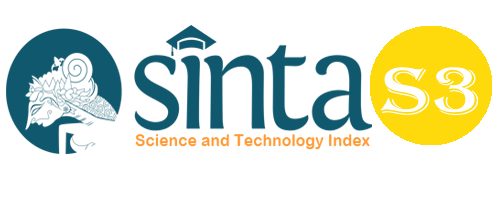Relationship of the External Environment to the Dynamics of Organizational Culture a Study of Organizational Anthropology
Abstract
This study aims to determine organizational external factors that affect organizational existence and anticipatory strategies at the financing company PT. Fleet Finance in Makassar. The research method in this study is a qualitative descriptive method. Research informants are managers, employees and customers of companies that are determined purposefully. The results showed that the form of resistance to the external environment in the form of fixed rules as a consideration for the company, but with a strategy that still maximizes the profile by minimizing risk. Environmental threats from similar companies are anticipated with the advantages of relationships with the network of companies that are in the same group within the Kalla Group, more competitive discounts with other companies and massive promotions both on social media and at auto shows. The global economic slowdown is anticipated with the following strategies: (1) The Company implements a communication strategy that emphasizes product and service excellence, not only promoting the issue of halal and haram products, (2) Opening new financing products that can take the form of take over from other funding (3) Increasing the vehicle business segment, such as pick up cars and trucks, and (4) Evaluating the company's financing activities by trying to normalize all vehicle financing investments.
Keywords
Full Text:
PDFReferences
Allaire, Y., and ME Firsirotu, ME (1984). Theories of organizational culture. National Defense University: Organization Studies5:193-226, http: // www.au.af.mil/ au/ awc/ awcgate/ ndu/strat-ldr-dm/ refer.html
Arif, S. (2019). Influence of Leadership, Organizational Culture, Work Motivation, and Job Satisfaction of Performance Principles of Senior High School in Medan City. Budapest International Research and Critics Institute-Journal (BIRCI-Journal). P. 239-254
Bierly, (2000). "When Your Culture Needs a Makeover," Harvard Business Review (June 2000): 53-61. (Pdf)
Brown, D. Andrew. (2002). Organizational Culture. Great Britain: Pearson Education Limited.
Chuck, Williams, (2001), Manajemen (Terjemahan), Jakarta, Salemba Empat
Denison, (2000). "Bringing Corporate Culture to the Bottom Line," Organizational Dynamics, Winter London: Sage.
DOI:https://doi.org/10.31947/etnosia.v2i1
Fedyani, Ahmad S, (2015), Logika Antropologi; Suatu Percakapan Mengenai Dasar Paradigma, Jakarta, Prenada Media Group.
Firth, Raymond, (2013), Elements of Social Organization, London and New York, Routledge Publisher.
Geertz, C, 1992, "Local Knowledge" and Its Limits: Some Obiter Dicta. Yale Journal of Criticism 5(2):129-135.
https://doi.org/10.31947/etnosia.v5i1.9669
https://journal.unhas.ac.id/index.php/etnosia/article/view/9669
Kotter John P & James L. Heskett James.L, (1992), Corporate Culture & Performance (Free Press), p. 11. www.amazon.com (ebook)
O'Reilly, Steven J., (1998), Beyond COSO: Internal Control to Enhance Corporate Governance. New York: John Wiley& Sons, Inc.
Safriadi, (2017), Memenangkan Pasar Pembiayaan: Studi Kasus Strategi Bisnis PT. Armada Finance di Makassar, Jurnal Etnosia, Vol.2, Edisi 1 Juni 2017. https://journal.unhas.ac.id/index.php/etnosia/article/view/2955
Safriadi, (2020), Organizational ethnography: "Clicks" among employees on private companies, Vol.5, Edisi 2 Desember 2020,
Schein, Edgar H, (1992), Organizational Culture and Leadership, Jossey Bass, San Francisco, pdf file.
Suyono, Ariyono, (1985), Kamus Antropologi, Publisher: Jakarta: Akademika Pressindo.
DOI: https://doi.org/10.33258/birci.v5i1.3984
Article Metrics
Abstract view : 84 timesPDF - 36 times
Refbacks
- There are currently no refbacks.

This work is licensed under a Creative Commons Attribution-ShareAlike 4.0 International License.

This work is licensed under a Creative Commons Attribution-ShareAlike 4.0 International License.

_.gif)

















_.gif)



